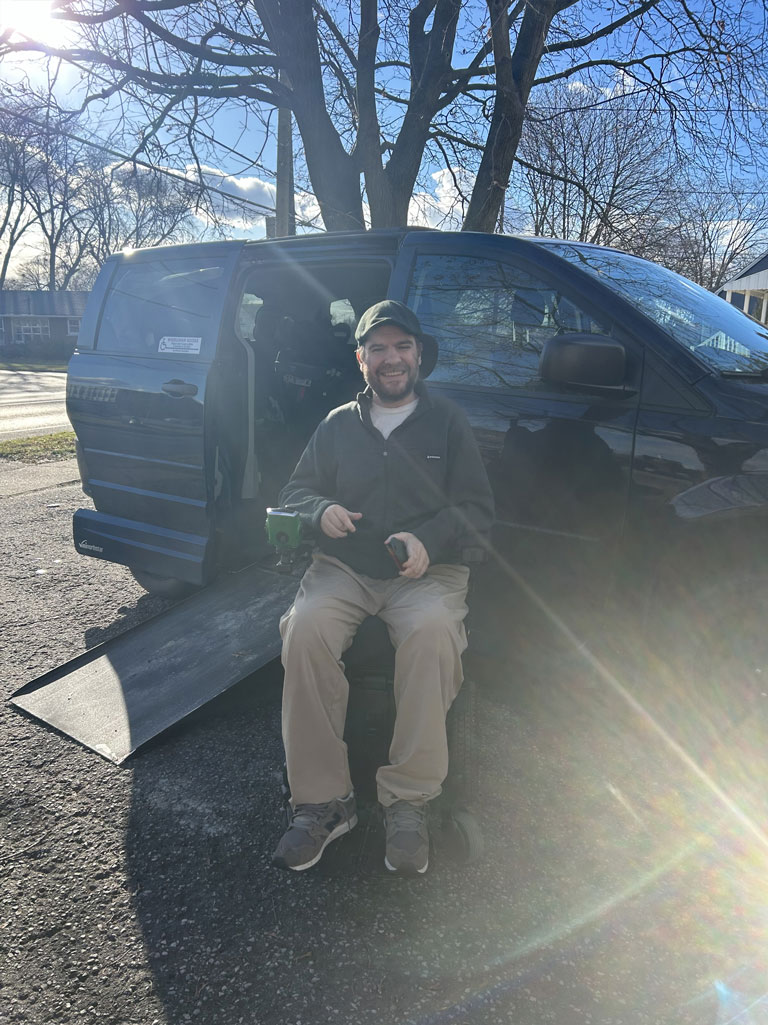Life at iLevel Canada


The Importance of Accessibility
by Jared Wayland
In the world of a wheelchair user, independence often hinges on the reliability of specialized equipment. For many people like myself, a wheelchair accessible van is not merely a mode of transportation; it's a gateway to freedom, offering mobility and access to the outside world. However, when this lifeline suddenly breaks down, the ripple effect can be overwhelming. It not only disrupts plans but also the very essence of daily life.
Try to imagine relying on a meticulously adapted vehicle to move around, only to have it falter unexpectedly. The sense of vulnerability and dependency can be daunting. Unfortunately, I've recently experienced firsthand the disruptive impact of a breakdown in my accessible van (battery issues), and the ramifications are far-reaching.
The feeling of entrapment is one of the most distressing aspects. Suddenly, my ability to venture out freely and engage with the world is compromised. Simple tasks like grocery shopping, attending appointments, or meeting friends become monumental challenges. The feeling of being confined to my immediate surroundings is stifling, amplifying a sense of isolation that's hard to shake off. I’ve had to cancel multiple doctor appointments in the past 2 weeks, as well as re-arrange many of the Christmas plans we had in place.
The ordeal doesn't merely end with the inconvenience of a stalled vehicle. There's a domino effect on my daily routine. The reliance on alternate modes of transport—be it unreliable paratransit services which have to be booked weeks in advance or public transportation—adds layers of complexity. While the buses in St. Catharines are all accessible, it is a time-consuming ordeal. The time constraints and unpredictability of these options further limit spontaneity and control over my own schedule. What used to be a seamless journey now becomes a labyrinth of logistical hurdles.
Moreover, the financial strain is a different beast altogether. Wheelchair accessible vans aren’t just standard vehicles; they are customized with expensive modifications tailored to specific needs. Repair costs often skyrocket due to the specialized nature of these adaptations, causing not just inconvenience but significant financial stress. The fear of prolonged downtime due to waiting for repairs or replacements looms large, amplifying the feeling of helplessness.
The emotional toll is equally challenging. A breakdown isn’t merely a mechanical issue; as I’ve talked about, it's a disruption that encroaches on one's independence and autonomy. Frustration, anxiety, and a sense of powerlessness are constant companions during such times. It's a reminder of how reliant I am on external factors beyond my control—a realization that can be disheartening.
The experience underscores the urgent need for better accessibility and support systems. Timely and reliable repair services tailored to the needs of wheelchair accessible vehicles are crucial. Additionally, comprehensive and affordable insurance coverage for these specialized vehicles could alleviate some of the financial burdens that accompany breakdowns. Unfortunately for us in Niagara, we only have one specialized auto shop that deals with accessible vehicles - a few towns over.
Fortunately, in my case, my Stretto can get me most of the places I need to go close to home. It’s great for getting out for a walk or going to the convenience store, and I am thankful for that when our van is down and out. However, the ramifications of a wheelchair accessible van breakdown extend far beyond the inconvenience of a stalled vehicle as I’ve covered already. We’ve now been almost two weeks without our van and saying that I miss it would be a massive understatement. Fingers crossed that it comes back to us soon in tip-top shape!
